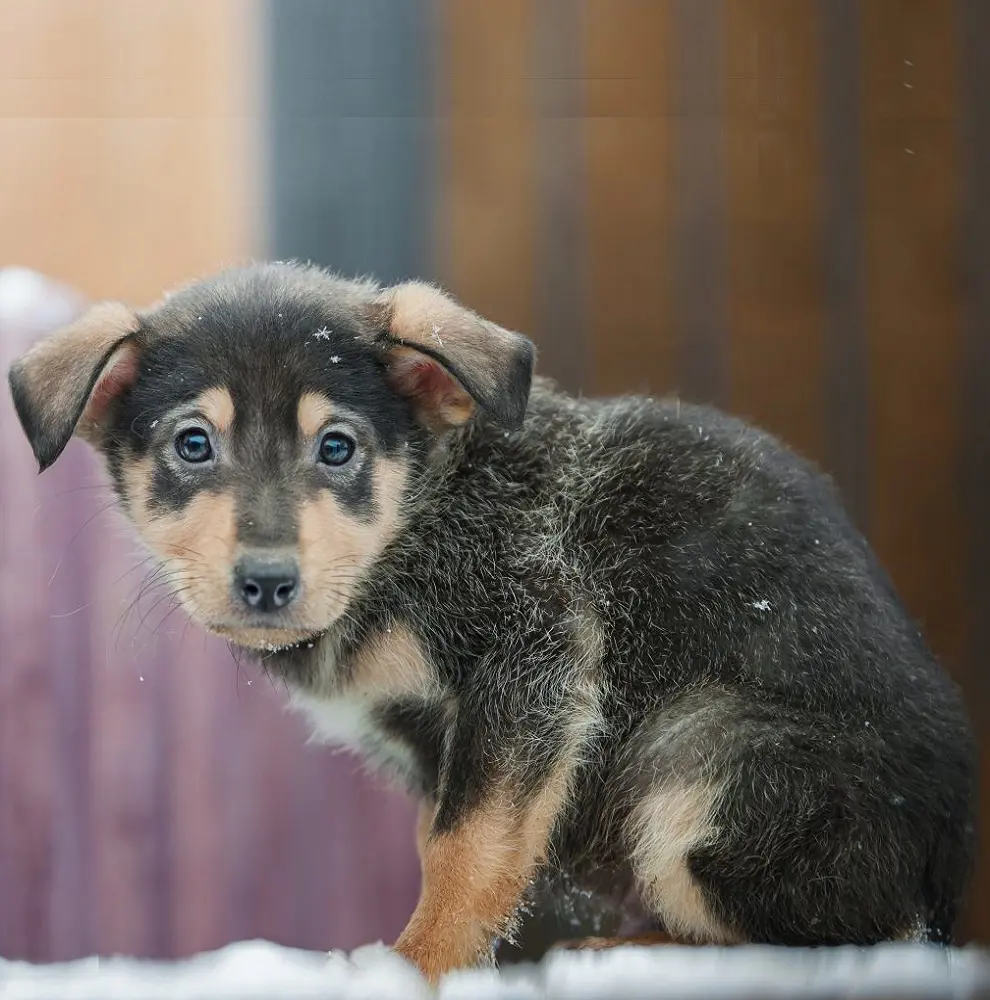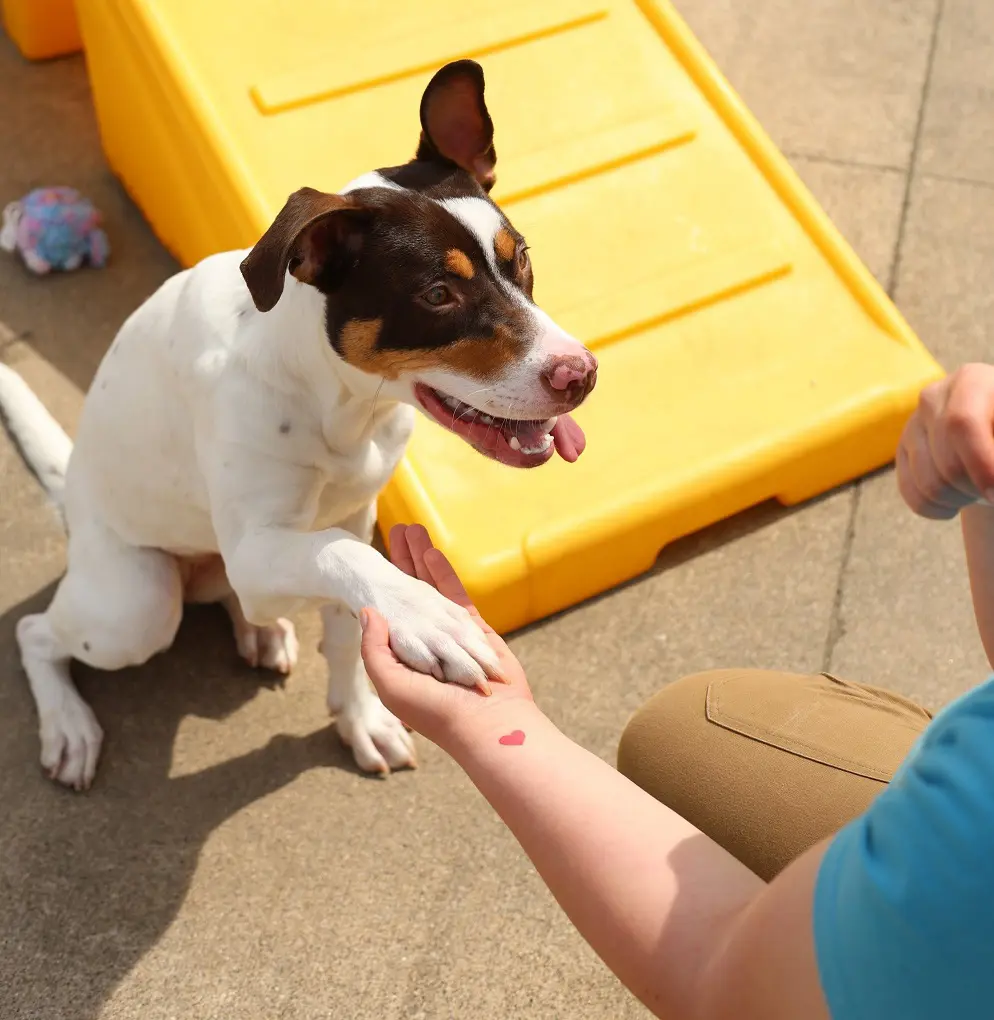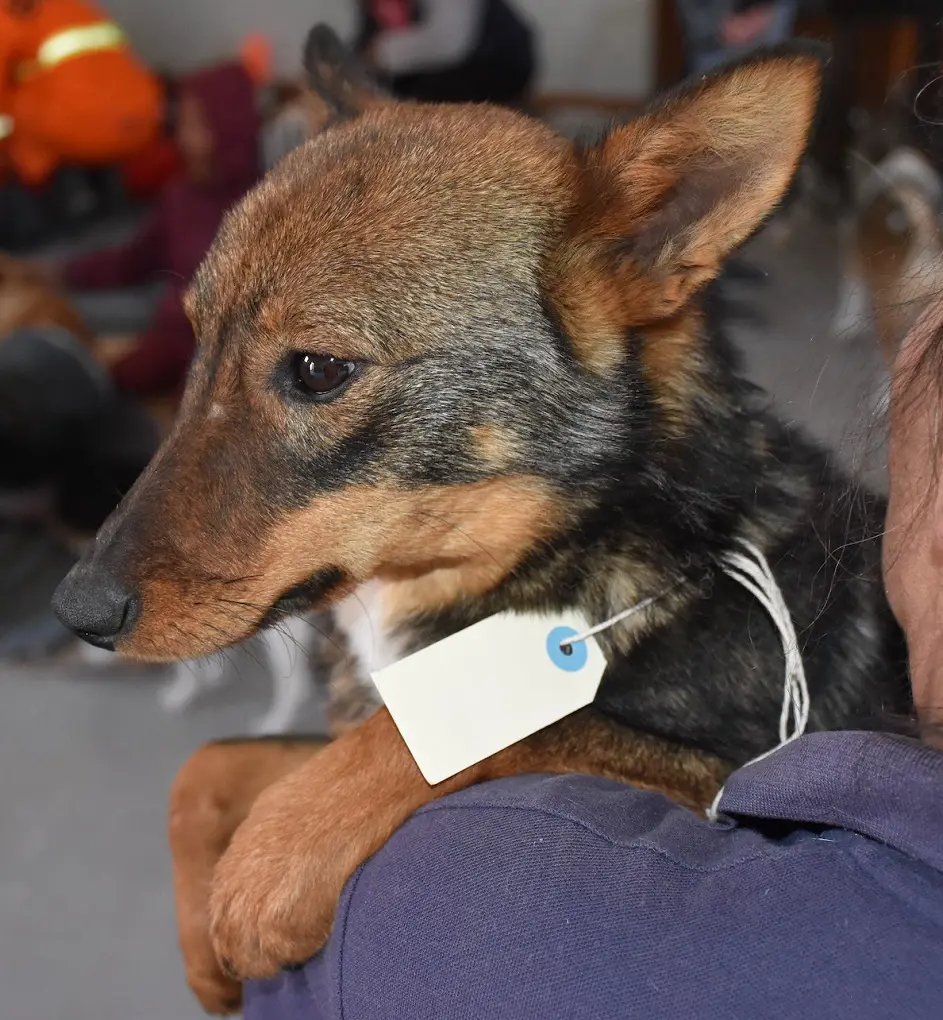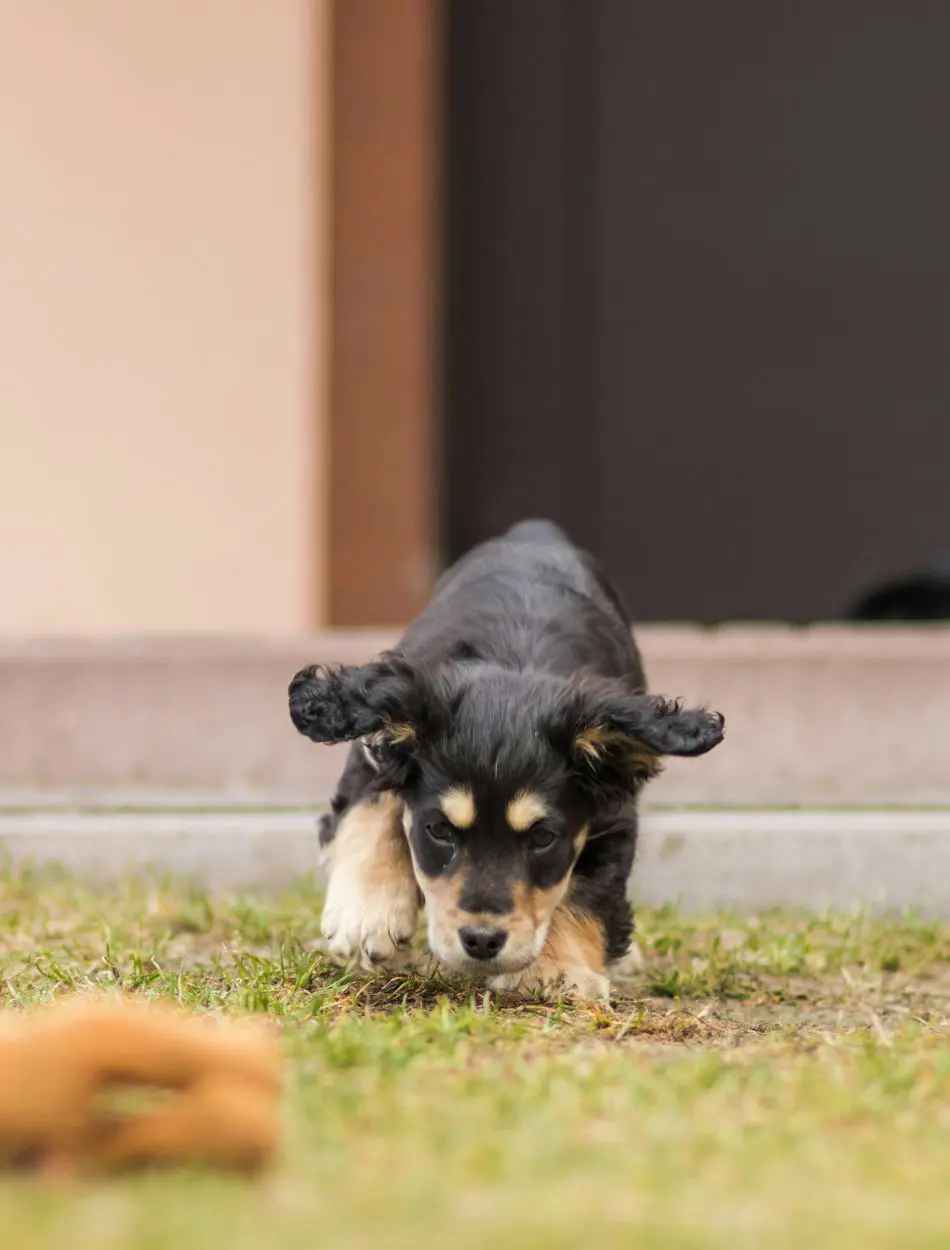Why Is My Dog Shaking? 18 Common Reasons

Witnessing your dog trembling or shaking is concerning, and it's understandable to be worried. It is essential to comprehend these causes to ensure their well-being.
Occasionally, shaking is only a natural response to a small amount of excitement or cold. It may also indicate more serious illnesses including neurological disorders or underlying health problems like pain, anxiety, or even more severe conditions.
Pet owners who are aware of the many triggers and reactions can better support their furry friends and seek prompt veterinary care when necessary.
1. Excitement
Dogs typically shake with excitement as a means of expressing strong feelings. This is a typical response to events that excite their senses or make them happy, such as meeting their owners, looking forward to a stroll, or spotting a beloved toy.
In these situations, shaking is usually safe and a healthy way for them to release their high levels of vigor and excitement. Extreme excitement causes a dog's adrenaline levels to rise, which causes them to tremble visibly.
Younger or higher-energy breeds that are more likely to exhibit exuberant behavior may notice this the most. Excitation-induced trembling, in contrast to trembling brought on by fear or anxiety, is typically accompanied by other happy behaviors like wagging tails, playful barks, and alert, bright eyes.
2. Cold

It is a normal reaction to low temperatures for a dog to shake. This response is more prevalent in small breeds, dogs with short hair, or dogs that aren't used to the cold. Similar to how people shiver, shaking encourages muscle activation and the production of heat.
Dogs who are less furry or have less body fat provide less protection from the cold, which makes them more prone to feeling cold. This reaction can be triggered by being in a cold atmosphere, being outside during the winter, or becoming wet.
Coats, blankets, or inside heating can all help reduce this discomfort by providing warmth. It's critical to keep an eye on your dog's exposure to the cold and to modify their surroundings or attire as necessary.
3. Stress and Fear
Fear and stress are two typical causes of shaking in dogs. A dog's body goes into hypervigilance when it perceives a threat or anxiety. The reaction, which is also referred to as the "fight or flight" response, causes muscles to shake as adrenaline is released.
Stressors can include strange surroundings, the presence of new people or animals, loud noises like fireworks and thunderstorms, and unusual situations. Situational fears include being apart from their owner or experiencing a trip to the veterinarian.
Dogs are also extremely perceptive to the feelings of their owners and the environment in general. A dog may begin to shake in response to stress or anxiety in its surroundings. Reassuring them or creating a quiet environment will assist reduce their anguish along with understanding these triggers.
4. Seeking Attention

Dogs shake in response to different stimuli, but they can also learn to shake to get attention. Attention-induced shaking, as opposed to trembling brought on by true fear or cold, frequently manifests in situations where the dog expects a desired reaction from its owner, like playfulness or caressing.
When the owner responds in a well-intentioned manner, this behavior might spiral out of control. Examine situations to differentiate tremors that are attention-seeking.
5. Pain or Illness
Pain or illness can be a major underlying cause of a dog's shaking. When dogs are in pain from ailments like arthritis, injuries, or internal agony from problems like gastrointestinal distress or organ inflammation, they may tremble.
Shaking can also be a symptom of illnesses such as infections, fever, or metabolic abnormalities, which are the body's reaction to being ill. When a dog has a high fever, for instance, its body may shake in an attempt to control its temperature.
Dogs use physical cues like shaking to indicate their pain or distress because they are unable to do so vocally. It is possible to determine whether pain or disease is the cause by observing the situation and any accompanying symptoms, such as lethargy, unwillingness to move, or behavioral changes.
6. Old Age

Shaking or tremors can become increasingly common in older dogs and are commonly associated with natural aging. Due to arthritis or other degenerative disorders, older dogs may have joint pain or weakness that causes them to tremble, especially in their legs.
Age-related alterations in the neurological system can also cause tremors, which are involuntary shaking caused by a decrease in the brain's ability to control muscles. Senior dogs may also have less body fat and a thinner coat, which increases their susceptibility to cold, which can result in shaking.
Similar to dementia in people, cognitive impairment in elderly dogs can also result in fear or disorientation, which can trigger stress-related behaviors like shaking. These tremors need to be watched closely since they could be signs of discomfort or underlying medical problems. However, consulting a veterinarian is the best option if you think it's something serious.
7. Nervousness
Little dogs trembling a lot can be out of nervousness, it's usually an indication of how stressed or anxious they are in that specific situation. Their shivering, or quivering can be described as a physical indication of their mental anguish.
Dogs might become nervous for a variety of reasons, including being in strange places, hearing loud noises like fireworks or thunderstorms, or meeting new people or animals. The body goes into fight-or-flight mode when adrenaline is released, and this is why you shake reflexively.
Nervous shaking occasionally comes with additional symptoms of worry, like pacing, panting, or looking to their owner for solace. It can be controlled and the frequency of shaking episodes in stressful settings decreases by identifying and treating the underlying reason for the dog's worry, whether it be by introducing stimuli gradually, offering comfort, or employing calming tactics.
8. Allergic Reaction

Similar to human allergic reactions, canine allergic reactions can cause a range of painful symptoms, including shaking. The body trembles in an attempt to get rid of the perceived allergen and lessen the irritation it produces.
The chemical histamine, which is released during allergic reactions, causes the body to go into an inflammatory state. These reactions have the potential to agitate the neurological system, which can result in uncontrollably twitching muscles.
Furthermore, itching is a common side effect of allergic reactions, and a dog's natural response to discomfort can be to shake to move the irritant.
Hence, shaking on its own does not always indicate allergies, although it does become more suggestive when combined with other symptoms like licking excessive scratching, red skin, or breathing problems. It is better to consult a vet if you see them shaking or shivering.
9. Nausea
Dogs that are sick to their stomachs tremble or shiver like people do. This physiological response most likely results from the body trying to keep everything in balance while experiencing digestive distress.
Shaking may result from the activation of the autonomic nervous system, which is in charge of automatic functions. This can cause widespread muscular contractions and the production of heat.
This shaking may help to raise body temperature and may facilitate the removal of noxious materials or pathogens that could be the source of the nausea. Shaking may also be a behavioral reaction to a feeling of discomfort or uneasiness brought on by nausea.
Seeking advice from a veterinarian is advised if your dog exhibits shaking along with other symptoms of nausea, such as lip licking, excessive salivation, or vomiting, in order to identify the underlying reason and guarantee appropriate treatment.
10. Muscle Weakness or Fatigue

Dogs that shake may be experiencing muscle weakness or weariness frequently as a result of intense exercise or underlying medical issues. Like people, dogs who exercise vigorously may get muscle weariness afterward, which may cause them to shake briefly while their muscles heal.
Dog's shaking may be an indication of a strained muscle if it is in pain or discomfort.
Weakness and trembling can result from nutritional inadequacies, especially in minerals like calcium and potassium that affect muscle function. It's critical to see if the shaking is intermittent or continuous and to get veterinary advice to rule out any major underlying medical conditions.
11. Overexertion or Heat Exhaustion
Your dog may be shaking from heat exhaustion or overexertion. Dogs get overexerted when they are pushed beyond their physical capabilities, usually during intense play or activity. Tremors and muscle weariness may result from this.
Conversely, heat exhaustion occurs when a dog experiences high temperatures or engages in vigorous exercise outdoors, leading to their body being overheated. Panting, drooling, and shivering are signs that the dog's body is having trouble cooling down.
It's important to give your dog lots of water and to let them relax in a cool, shady spot in both situations. To protect your dog's safety and wellbeing, get veterinarian attention right awy if the shaking doesn't stop or if they exhibit other distressing symptoms like excessive panting or lethargy.
12. Shaking Off Water

Dogs' natural tendency to shake off the water is a result of their survival instincts. Dogs' fur gets heavy and can cool them when wet, especially in cold climates. They can swiftly expel extra water by shaking, which is essential for maintaining their mobility and warmth.
The energy and time required for them to dry out would be greatly reduced by this quick shaking, which can remove up to 70% of the water in just a few seconds. Not only is this conduct effective, but it's also essential for their well-being and comfort. Shaking off water helps dogs in the wild avoid hypothermia hazards.
This natural response also guards against skin problems that could result from persistent moisture. This behavior is still shown by domesticated dogs to keep them comfortable and dry after a swim, bath, or rainy excursion.
13. Adrenaline Rush
An adrenaline rush, which can be brought on by a variety of triggers such as excitement, fear, or anticipation, can cause dogs to tremble. The body releases adrenaline into the bloodstream when a dog gets an adrenaline rush, which results in physiological changes like elevated heart rate and attentiveness.
This energy burst may seem like trembling or shaking. Dogs, for instance, frequently tremble before going for a walk or during a thunderstorm. Adrenaline primes them to either confront or avoid a crisis.
While the odd canine trembling brought on by an adrenaline rush is acceptable, regular or severe trembling may be a sign of underlying problems like worry or health disorders. It's critical to monitor your dog's behavior and seek vet advice if the shaking continues or is accompanied by further symptoms of distress.
14. Submission

Dog submission is the behavioral expression of reverence or respect for a dominant figure, which could be an individual, another dog, or even any situation. Dogs that exhibit submission usually adopt body language that conveys a readiness to yield and a lack of threat.
The body lowering, tucking the tail, avoiding eye contact, flattening the ears, and occasionally even shivering or shaking slightly are examples of these actions. Maintaining social cohesion and preventing conflict among canine packs or hierarchical structures are two benefits of submission.
Dogs may behave submissively toward people to show respect or to get praise.
15. Reinforced Behavior
Dogs who learn that shaking gets them attention or treats from their owners frequently tremble as a result of reinforced behavior. Dogs learn that shaking is associated with positive reinforcement when they shake and receive a reaction, like consoling words or caressing.
When owners unknowingly encourage their dogs' actions during times of excitement, fear, or attention-seeking, this behavior may emerge. Dogs that tremble during a thunderstorm, for instance, may do it again in the future if they anticipate receiving the same consoling response, a hug or a treat if they do so.
With time, dogs can start shaking more often, perhaps not because they're in pain, but more like they're expecting a treat. By recognizing this, owners may better control and redirect the dog's behavior by only rewarding it when it is calm.
16. Low Calcium Levels
Shaking in dogs can be caused by low calcium levels, a condition known as eclampsia, often seen in nursing or pregnant dogs. This issue occurs when the mother's body uses more calcium for milk production than it can replenish, leading to dangerously low calcium levels in the bloodstream.
This is most common in small or toy-breed dogs, and it typically arises within the first few weeks after giving birth when the puppies are nursing heavily. This is an emergency and requires immediate veterinary attention.
17. Heatstroke
Heatstroke in dogs is a serious and potentially life-threatening condition caused by prolonged exposure to excessive heat or overexertion in hot weather. Unlike humans, dogs cannot sweat effectively and primarily rely on panting to cool down..
One of the key symptoms of heatstroke in dogs is shaking or trembling, which occurs as the body struggles to regulate its temperature. Other signs include excessive panting, drooling, red or pale gums, rapid heartbeat, vomiting, and weakness.
18. Generalized Tremor Syndrome
It most commonly affects small, white-coated breeds like Maltese and West Highland White Terriers, although it can occur in dogs of any breed or color.
The exact cause of GTS is unknown, but it is believed to be related to inflammation in the central nervous system. Dogs with GTS exhibit full-body shaking that can range from mild to severe, yet they remain fully alert and aware.
Recent posts
Dogs
Why Do Dogs Pee in the House? 10 Causes And Solutions
Uncontrolled peeing inside the house is usually perceived as a sign of a poorly-disciplined dog. However, it may not always be true as the canine could be suffering from a medical issue or cognitive decline. And, getting made is not the solution as y...
Dog Sleeping Positions And Their Meanings
The diverse sleeping dog positions of our furry companions unveil a fascinating tapestry of behaviors and emotions in the canine realm. From the classic Curler to the enigmatic Superman, each posture conveys a unique message about a dog's well-being ...
Dog In Heat: When It Happens And How Long Does It Last
A female dog will get to the phase of reproduction known as the heat cycle if she has not been spayed. If you have an unspayed female dog, it's vital to understand the stages of her heat cycle. During heat, a canine's conduct may additionally c...
15 Causes of Dog Losing Hair
Occasional hair loss and shedding is a natural physical process in dogs. Seasonal shedding helps remove dead and excessive hair from their body. But, when a dog starts losing excessive hair, it can be a terrifying sight for pet owners. Often, dog par...
18 Signs A Dog is Dying
Recognizing the signs that a dog is dying can be heartbreaking, but it's far more essential to offer comfort in their final days. The signs consist of changes in behavior and constant hunger indicating that it may be time to say good-bye. Owners who...
15 Reasons Why Dogs Eat Poop And How To Stop It
Dogs sometimes engage in odd and unhealthy behaviors, along with ingesting their poop or that of different animals. This habit may be concerning and disgusting for any pup owners. This habit has many motives, however, the secret is locating eff...






